An Alabama death row inmate gave a chilling eight-word final statement in the moments before his execution by a controversial method after his first attempt failed.
Alan Eugene Miller, 59, became the second person to die of nitrogen gas asphyxiation on Thursday for killing three people in back-to-back workplace shootings in 1999.
‘I didn’t do anything to be in here,’ he said as he was strapped to a gurney at a prison in Atmore, on the Florida border.
‘I didn’t do anything to be on death row,’ Miller clarified before asking his relatives to ‘take care’ of someone, according to AL.com.
Alabama corrections officials then pumped nitrogen gas into a mask that covered Miller’s face from his forehead to his chin, forcing him to shake and tremble on the gurney for about two minutes.
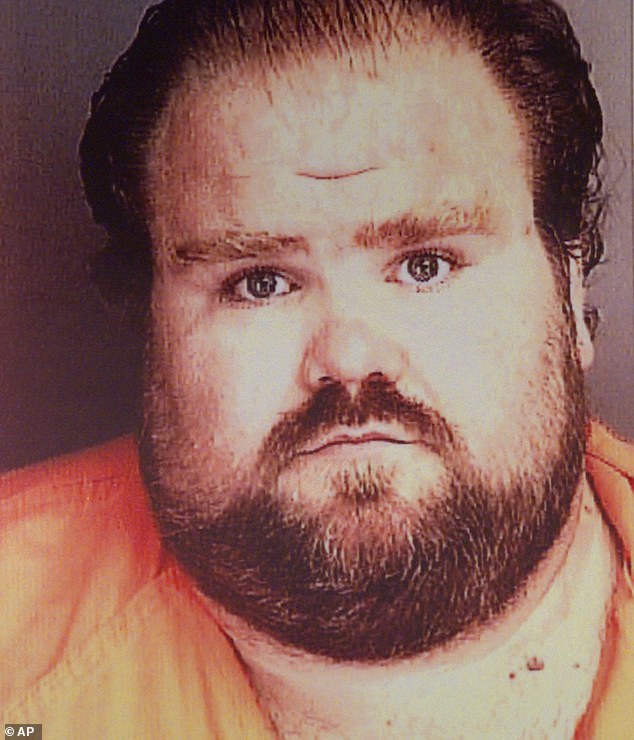
His left hand shook and clenched into a fist several times, and he was forced to lift his head from the gurney.
That was followed by about six minutes of periodic gasping breaths before he went still.
Miller was finally pronounced dead at around 6.38pm, Alabama Department of Corrections Commissioner John Hamm said at an ensuing news conference, noting the two minutes of shaking was to be expected.
‘There’s going to be involuntary body movements as the body is depleted of oxygen, so that is nothing we did not expect,’ Hamm said.
‘Everything went according to plan and according to our protocol, so it went just as we had planned.’
But Hamm later admitted that a corrections officer had to adjust the inmate’s mask before the gas started to flow.
‘That’s just making sure the mask is fitted,’ he said.
The execution was the second to use the new method Alabama first employed in January, when Kenneth Smith was put to death.
The method involves placing a respirator gas mask over the inmate’s face to replace breathable air with pure nitrogen gas, causing death by lack of oxygen.
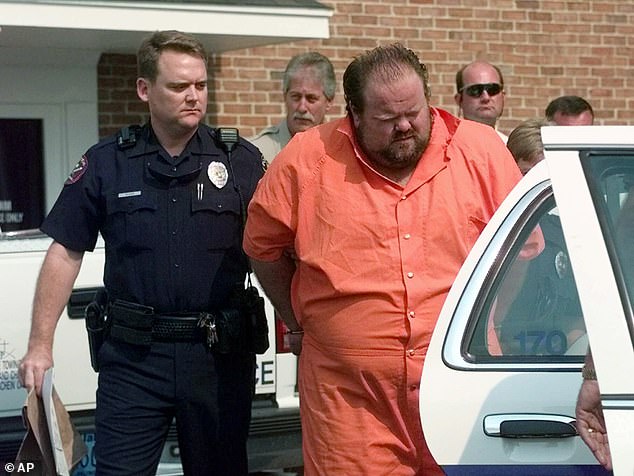
Miller had selected the option to die by asphyxiation in a 2018 form distributed to Alabama death row inmates, AL.com reports.
But the state was still not prepared to use nitrogen hypoxia as a form of execution when officials received a warrant for Miller’s execution in September 22, and opted to instead try to execute him by lethal injection.
That attempt was then called off when state officials said they could not access Miller’s veins before the execution warrant expired at midnight.
The inmate later filed a lawsuit against the prison, claiming that prison workers poked him for ninety minutes while trying to start an IV and left him hanging vertically as he laid strapped into a gurney, the Montgomery Advisor reports.
State prosecutors ultimately settled the suit, and agreed not to execute Miller using any method other than nitrogen hypoxia.
The method of execution was finally used earlier this year at Smith’s execution, at which the inmate was seen shaking, writhing and thrashing up and down on the gurney for two minutes after the nitrogen gas started filling up his mask.
That was followed by five to seven minutes of heavy breathing and slight gasping.
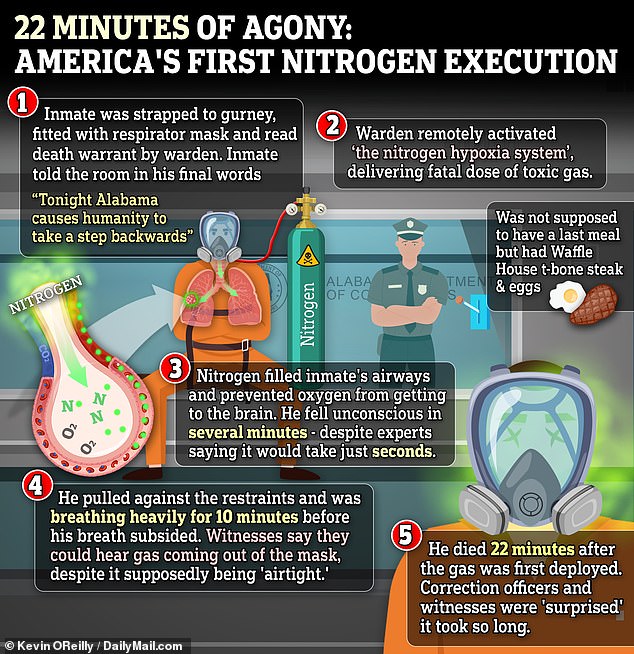
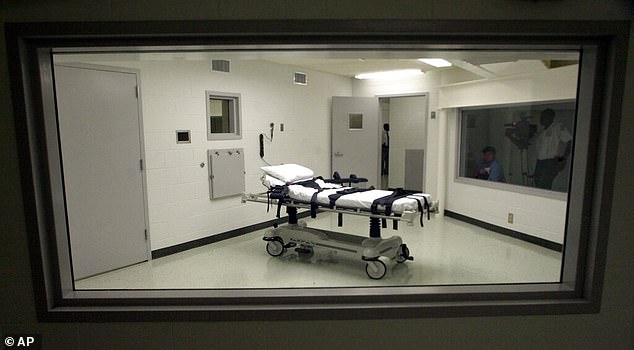
In the aftermath, Miller challenged the state’s nitrogen hypoxia protocol, claiming it could cause him undue suffering, thus violating his Eighth Amendment protections against cruel and unusual punishment.
His attorneys argued that the state did not offer any proof for their claims that Smith held his breath, and instead ‘hang[s] their hat exclusively on the self-serving testimony of a witness who claims to have remembered Smith’s oxygen levels nearly seven months after the execution.’
The witness, an execution team captain, did not write down the oxygen levels, nor did he tell anyone about the oxygen levels the night of the execution, Miller’s lawyers argued, according to AL.com.

‘In fact, evidence in the record suggest that the witness could not even see the levels from his position in the execution chamber, and the execution log from Mr. Smith’s execution… undercuts [the state’s] entire argument,’ they argued.
Miller also said in a deposition he was worried that the state will fail to secure his gas mask because they’re ‘incompetent.’
‘I don’t think y’all know what you’re doing,’ he told a state attorney. And these guys can’t even open a cell door sometimes.’
The suit was ultimately settled last month, and the terms of the settlement were confidential.
But Attorney General Steve Marshall touted the settlement as proof that Alabama’s nitrogen gas execution method is constitutional.
‘The resolution of this case confirms that Alabama’s nitrogen hypoxia system is reliable and humane,’ he said at the time.
Then, following the execution on Thursday, Marshall said: ‘Tonight, despite misinformation campaigns by political activists, out-of-state-lawyers and biased media, the State proved once again that nitrogen hypoxia is both humane and effective.
‘Miller’s execution went as expected.’
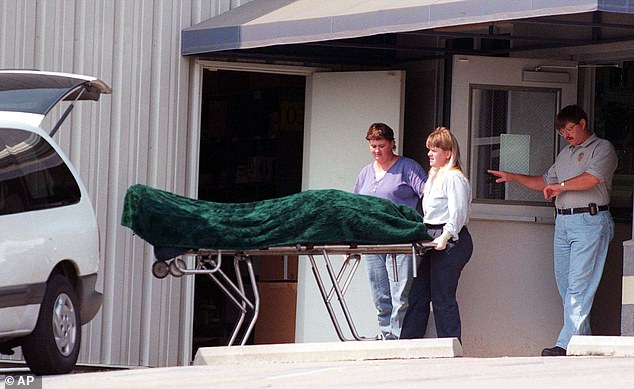
Miller, a delivery truck driver, was convicted of capital murder in 2000 for the August 5, 1999 shootings that claimed three lives and shocked the city of Pelham, a suburban city just south of Birmingham.
He had worked with each of the three victims – Lee Holdbrooks, 32, Scott Yancy, 28, and Terry Lee Jarvis, 39 – and had accused them of spreading rumors about him.
Police say he entered Ferguson Enterprises and fatally shot Yancy three times, leaving him unable to move after the first shot ‘traveled through his groin and into his spine, paralyzing him.’
Holdbrooks was also shot about six times and tried to crawl down a hallway to escape before Miller shot him in the head ‘causing him to die in a pool of blood,’ according to court documents obtained by CNN.
Miller then headed to his previous employer Post Airgas, where Jarvis worked.
He walked in and said, ‘Hey I hear you’ve been spreading rumors about me.’
Jarvis replied that he had not been spreading any rumors, a witness said, but just moments later Miller shot Jarvis ‘a number of times.’
He was later captured on the highway with a Glock pistol with one round in the chamber and 11 rounds in an ammunition magazine, police said.
Miller had initially pleaded not guilty by reason of insanity but later withdrew the plea.
A psychiatrist hired by the defense said that Miller was mentally ill but his condition wasn’t severe enough to use as a basis for an insanity defense, according to court documents.
Jurors convicted Miller after 20 minutes of deliberation and recommended by a vote of 10-2 that he receive the death penalty.
‘Just as Alan Miller cowardly fled after he maliciously committed three calculated murders in 1999, he has attempted to escape justice for two decades,’ Gov. Kay Ivey said in a statement Thursday.
‘Tonight, justice was finally served for these three victims through the execution method elected by the inmate.
‘His acts were not that of insanity, but pure evil,’ the governor said. ‘Three families were forever changed by his heinous crimes and I pray that they can find comfort all these years later.’
Family members of the three victims did not witness the execution and did not issue a statement to be read to reporters, state officials said.

